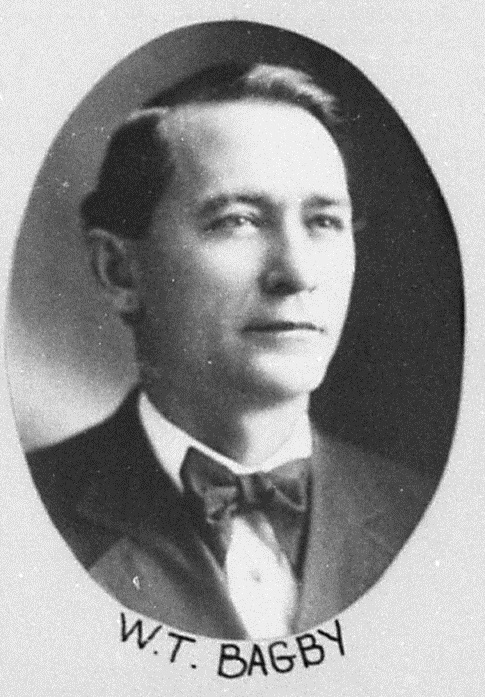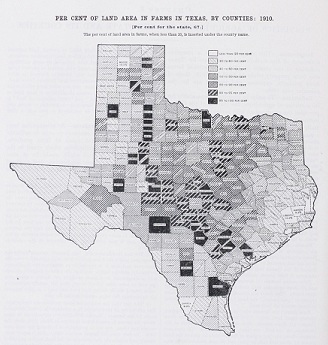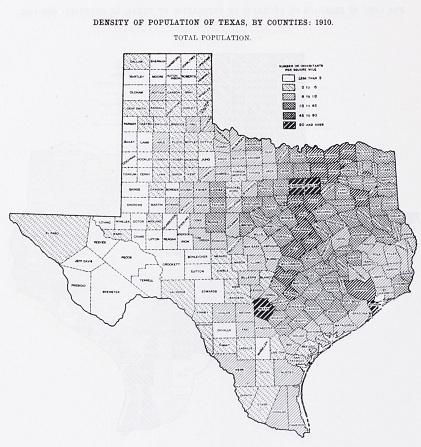One hundred years ago, Texas legislators convened in January 1913 for the 33rd Legislative Session. While Texas was in some ways a very different state than it is today, many of the issues the legislators faced have a familiar ring: school funding, veteran care, drought and water rights, the border with Mexico, women's rights, and hazing at universities. Over the next few months, we'll take a look at these issues and how legislators one hundred years ago addressed them.
For our first post, let's take a broad look at what was happening in the U.S.. and in Texas in 1913...
In the U.S.. and the World
- The Progressive Era was in full swing. Democrat Woodrow Wilson was elected president in 1912; the party platform focused on states’ rights and individual freedom, and called for environmental conservation, banking and currency reform, and abolition of monopolies.
- The majority of Americans (54%) still lived in rural areas, but the percentage was quickly changing. In 1920, the percentage of urban dwellers would cross 50% for the first time.
- World War I would begin in Europe the following year, though the U.S. would not enter the war until 1917.
- Two new constitutional amendments went into effect in 1913: the establishment of a federal income tax (16th amendment) and the direct election of senators (17th amendment).
- Though Prohibition would not begin until 1919, various states had passed bans on liquor and the Texas legislature would take up the issue during the 33rd session.
- The Mexican Revolution had begun in 1910. La Decena Tragica, the Ten Tragic Days, occurred in February of 1913, culminating with the murder of President Madero, who had led the revolution, and a coup d’etat by General Victoriano Huerta.
In Texas
- Texas had become a state 67 years prior. To the people of 1913, statehood was as far away as the end of World War II is for us today.
- Governor Oscar Branch Colquitt, inaugurated two years prior in 1911, would serve as governor until 1915. The Handbook of Texas notes that he "was one of the most effective stump speakers in the history of Texas."
- In 1909, Texas was the largest producer of cottonseed oil in the nation, with 21% of all production. The slaughterhouse industry was also on the rise; the 1910 census noted that "There were 242,174, or 84.9 per cent, more beeves slaughtered in 1909 than in 1904." (Beeves was a term for cow or steer - where the UT mascot name Bevo originates!)
- The oil boom was in its infancy; oil had been discovered at Spindletop just 12 years prior.
- The present state capitol building had been dedicated 25 years earlier, in 1888.
- In the spring of 1913, Sam Rayburn was sworn in as U.S. Congressman. He would go on to become the longest-serving Speaker of the House, serving 17 years under four presidents.
Texas Demographics:
| 1910 | 2010 | |
| Total population | 3.9 million | 25.1 million |
| Pop. density | 14.8 per sq. mile | 96.3 per sq. mile |
| % of pop. under 25 | 49% | 38% |
| % of pop. in urban areas | 24% | 86% |
Learn more about the era with books and reports from our collection:
- Session laws from the 33rd Regular Session and the 33rd First Called Session
- Vetoes by Governor Colquitt for the 33rd Regular Session and the 33rd First Called Session
- Search legislative reports and committee charges by subject, keyword, committee name, legislative session, and chamber.
- Department of Commerce and Labor, Bureau of the Census. Thirteenth Census of the United States Taken in the Year 1910: Abstract of the Census. Washington: Government Printing Office, 1913. Call number: 317.3 UN3 1910
- Department of Commerce and Labor, Bureau of the Census. Thirteenth Census of the United States Taken in the Year 1910: Abstract of the Census with supplement for Texas. Washington: Government Printing Office, 1913. Call number: 317.3 UN3 1910T
- Humphrey, R. B. Texas liquor laws. Austin: Southern Law Book Publishers, 1915. Call number: 351.761 H88T
- Potts, C.S. “Some Practical Problems of Prison Reform,” in Bulletin of the University of Texas, No. 162, Humanistic Series No. 10. Austin: University of Texas Press, December 8, 1910. Call number: Z UA200.7 B874I 1882-1942
- Tarde, Gabriel de, and Repelje Howell, trans. Penal Philosophy. Boston: Little, Brown, and Company, 1912. Call number: 343.2 T172
- Whisenhunt, Donald W. “Texas in the Progressive Era, 1900-1930,” in Texas: A Sesquicentennial Celebration. Austin: Eakin Press, 1984. Call number: 976.4 W578T
- White, E.V. and E.E. Davis. “A study of rural schools in Texas,” in Bulletin of the University of Texas, No. 364, Extension Series No. 62. Austin: University of Texas Press, October 10, 1914. Call number: Z UA200.7 B874 364
- Yoakum, Clarence Stone. “Care of the Feeble-Minded and Insane in Texas,” in Bulletin of the University of Texas, No. 369, Humanistic Series No. 16. Austin: University of Texas Press, November 5, 1914. Call number: Z UA200.7 B874 369




